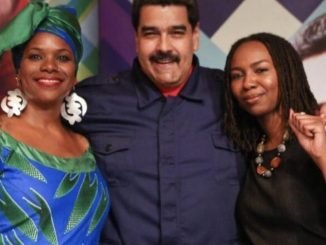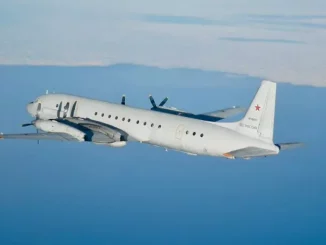
Soldiers of the 115th Brigade fire at drones in the Lyman area, Donetsk Oblast, Ukraine, on April 24, 2025. (Jose Colon / Anadolu via Getty Images)
| Published May 9, 2025
Russia’s self-declared ceasefire, effective from midnight on May 8 to May 11 to mark Victory Day, has not been observed on the front lines. Ukrainian soldiers report ongoing shelling, artillery fire, and drone attacks, with over 100 clashes occurring on the first day of the truce. President Volodymyr Zelensky criticized the ceasefire as a “theatrical performance,” highlighting the lack of consultation and monitoring mechanisms. Experts note that ceasefires require mutual agreement and clear terms, which were absent in this unilateral declaration.
🇷🇺 Russia’s Ceasefire and Victory Day Celebrations
-
Unilateral Ceasefire Declared: On May 8, 2025, Russia announced a 72-hour ceasefire from May 8 to May 11 to mark Victory Day. However, Ukrainian officials and soldiers reported ongoing hostilities, with no significant reduction in combat activities.
-
Victory Day Parade in Moscow: President Vladimir Putin hosted a grand military parade in Moscow, attended by global leaders including China’s Xi Jinping and Brazil’s Luiz Inácio Lula da Silva. The event showcased Russia’s military strength amid the ongoing conflict with Ukraine.
-
Internet Restrictions During Celebrations: In anticipation of Victory Day, Russia implemented mobile internet restrictions in various regions, including Moscow, citing security concerns. These measures aimed to control information flow during the celebrations.
🇺🇦 Ukraine’s Response and International Reactions
-
Criticism of Ceasefire: Ukrainian President Volodymyr Zelensky criticized the Russian ceasefire as ineffective, highlighting ongoing violations and the lack of mutual agreement. He emphasized the need for a genuine and enforceable truce to pave the way for peace.
-
Calls for a 30-Day Ceasefire: Following discussions with President Zelensky, former U.S. President Donald Trump called for a 30-day unconditional ceasefire between Russia and Ukraine. He warned that failure to comply would result in further sanctions from the U.S. and its allies.
-
International Support for Ukraine: European leaders demonstrated unity against Russian aggression. French President Emmanuel Macron and Polish Prime Minister Donald Tusk announced a new bilateral cooperation and security treaty, while Germany’s Chancellor Friedrich Merz visited Brussels to reiterate support for Ukraine.
Here are the pros and cons of the article titled “The front is noisy — for Ukraine’s soldiers, Russia’s Victory Day ceasefire is yet another sham”:
Pros:
-
Current and Relevant: The article provides up-to-date information on the situation in Ukraine, particularly around Russia’s declared ceasefire for Victory Day in May 2025.
-
Clear Criticism of Russia’s Ceasefire: It highlights the hypocrisy of Russia’s ceasefire declaration, showing that it’s more of a political stunt than a genuine effort to bring peace to the region.
-
Firsthand Accounts: The inclusion of reports from Ukrainian soldiers adds authenticity and humanizes the conflict, giving readers insight into the ongoing struggles on the front lines.
-
Informed Perspective: The article includes expert analysis, offering readers a broader context for understanding why the ceasefire failed and why such unilateral declarations are ineffective.
-
Comprehensive: It provides both Ukrainian military perspectives and broader geopolitical implications, offering a multi-faceted view of the situation.
Cons:
-
Unilateral Focus: The article predominantly focuses on the Ukrainian perspective and the failure of Russia’s ceasefire, potentially missing out on the Russian viewpoint or broader international reactions.
-
Lack of Sources from Russia: There is no input or verification from Russian officials or soldiers, which may limit the depth of the analysis and might be seen as one-sided.
-
May Appear Biased: For some readers, the strong language used to describe Russia’s actions could be seen as biased, especially if they’re looking for a more neutral or balanced presentation.
-
No Major Solutions or Future Outlook: While the article critiques Russia’s actions, it doesn’t delve deeply into what might happen next or potential solutions to the ongoing conflict, leaving readers without a sense of direction or hope.
-
Limited Global Impact: The focus is mainly on the immediate front-line situation, with little emphasis on how the ceasefire failure affects global politics or humanitarian efforts.
Conclusion
Russia’s declared ceasefire for Victory Day, while symbolizing a moment of supposed peace, has proven to be ineffective and largely ignored on the frontlines. Ukrainian soldiers reported continued attacks, and President Zelensky criticized the ceasefire as a hollow gesture, underscoring the lack of mutual agreement and enforcement mechanisms. International reactions are mixed, with Ukrainian leaders demanding more genuine peace efforts and outside powers, such as the U.S. and EU, calling for stronger, enforceable ceasefire agreements.
Despite the Russian government’s public display of military strength through the Victory Day parade, the ongoing conflict and international calls for peace highlight the complexity and challenges of resolving the war. The situation remains tense, with no clear signs of a breakthrough, but the continued pressure from the global community may eventually push both sides toward meaningful negotiations.
In essence, the so-called ceasefire is yet another reminder of the difficulties in achieving peace in a prolonged and polarized conflict like this one.
SOURCES: THE KYIV INDEPENDENT – ‘The front is noisy’ — for Ukraine’s soldiers, Russia’s Victory Day ‘ceasefire’ is yet another sham




